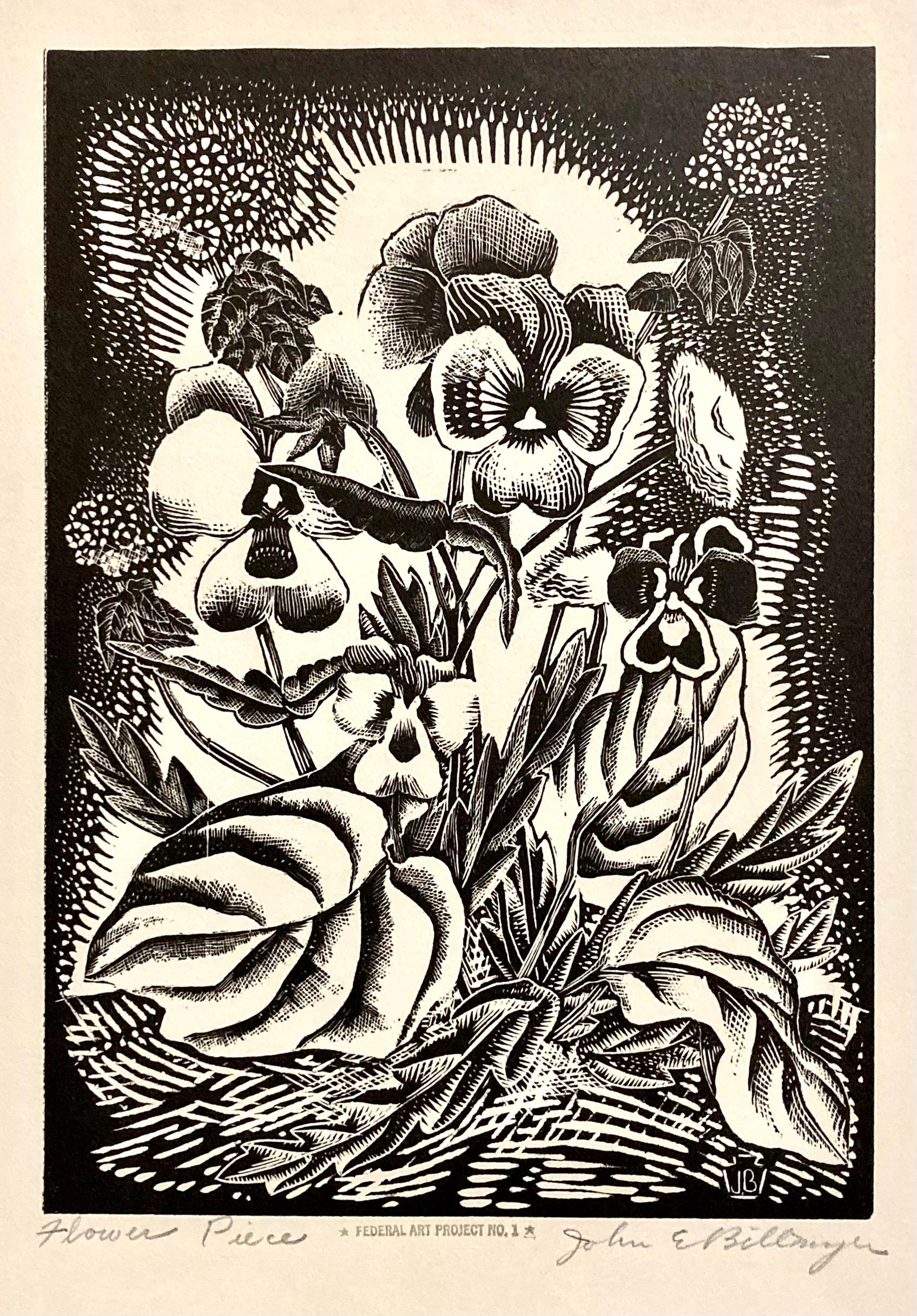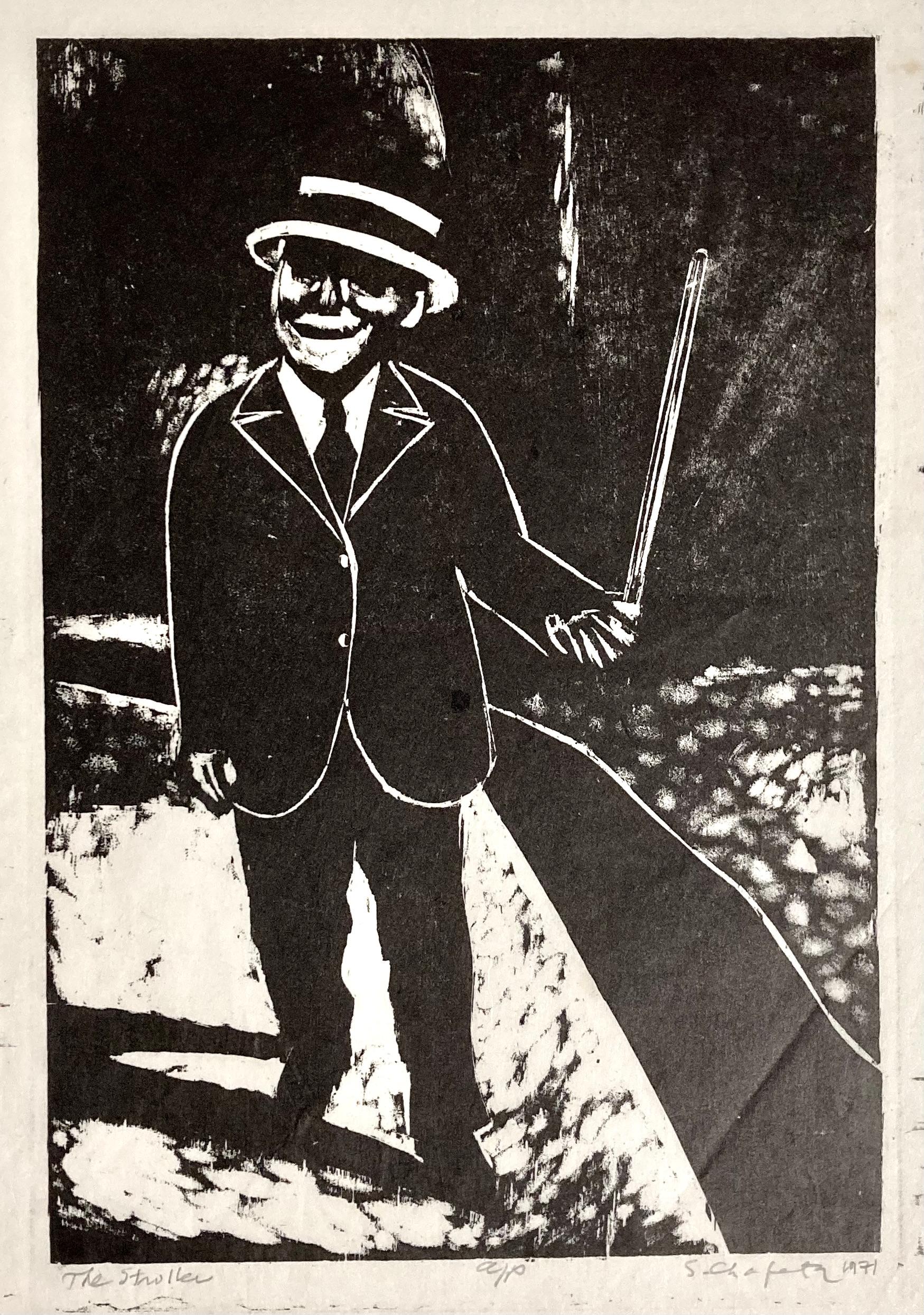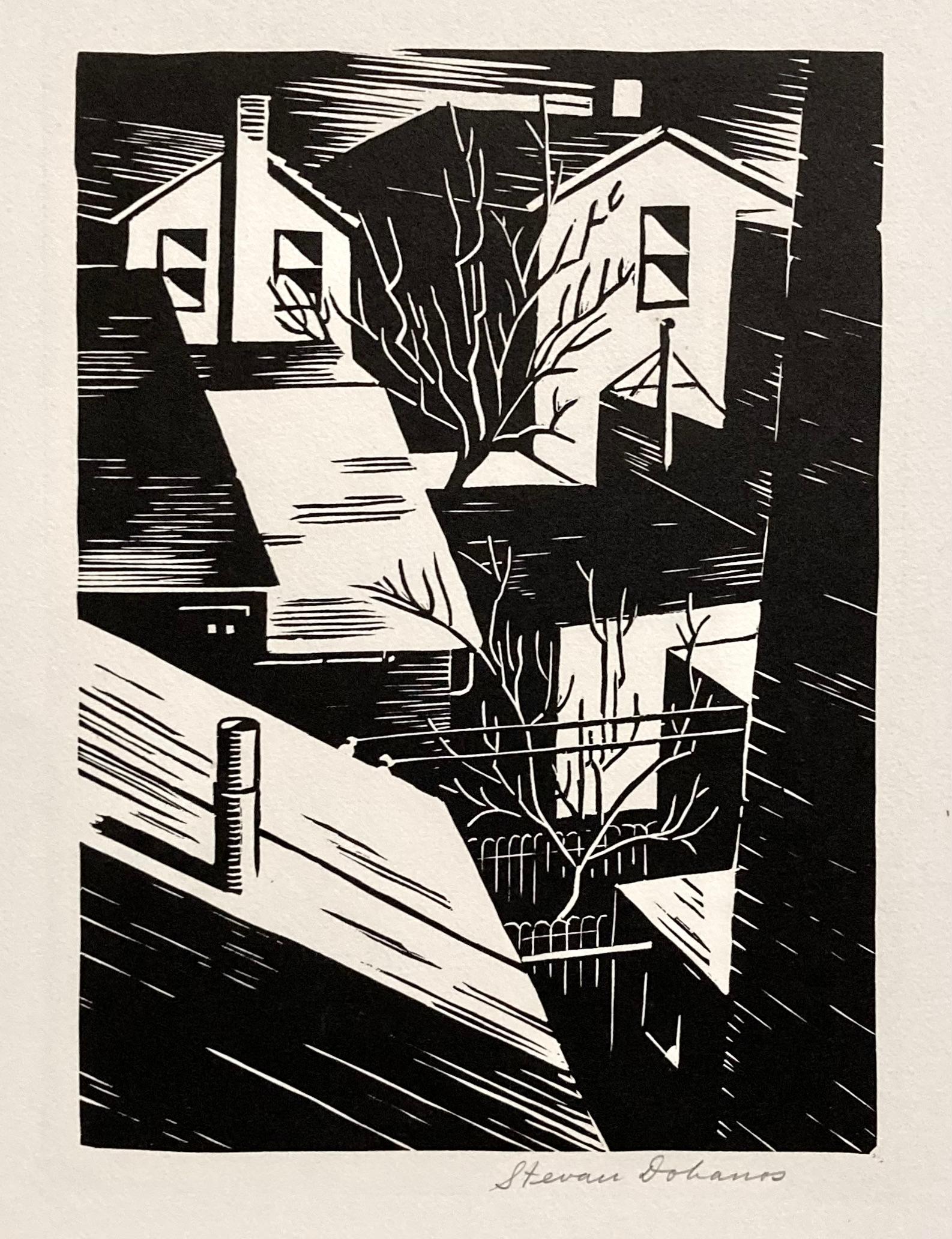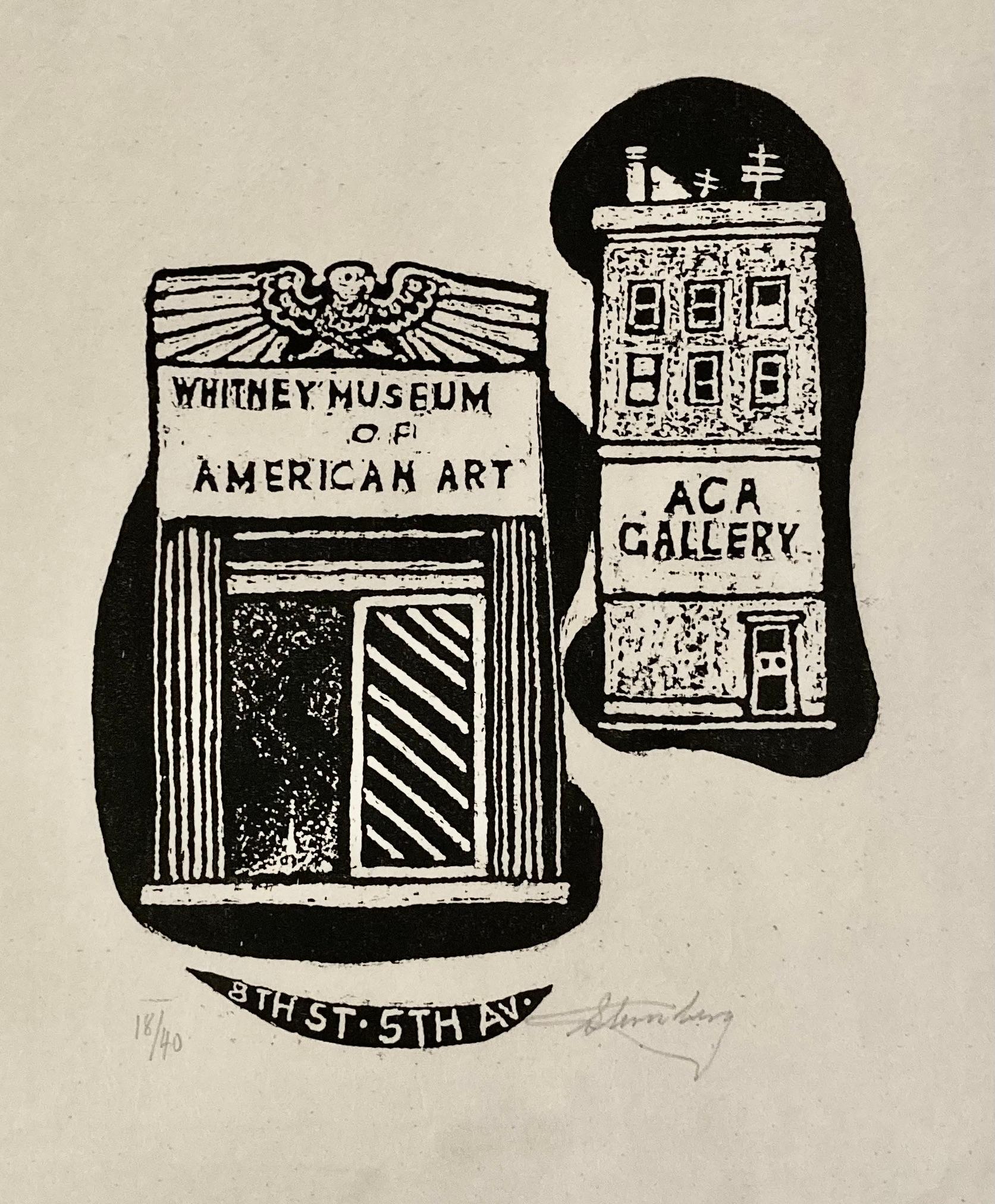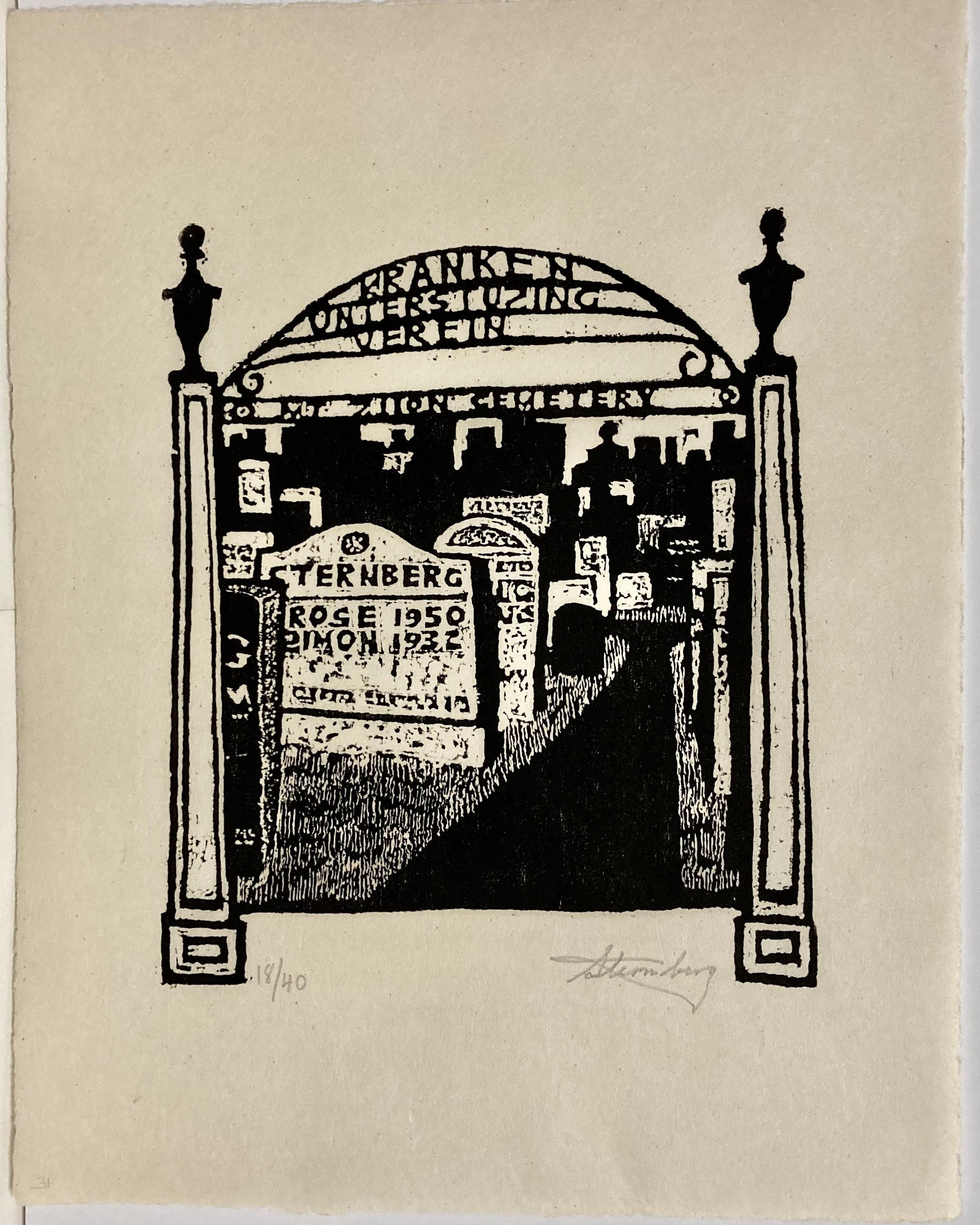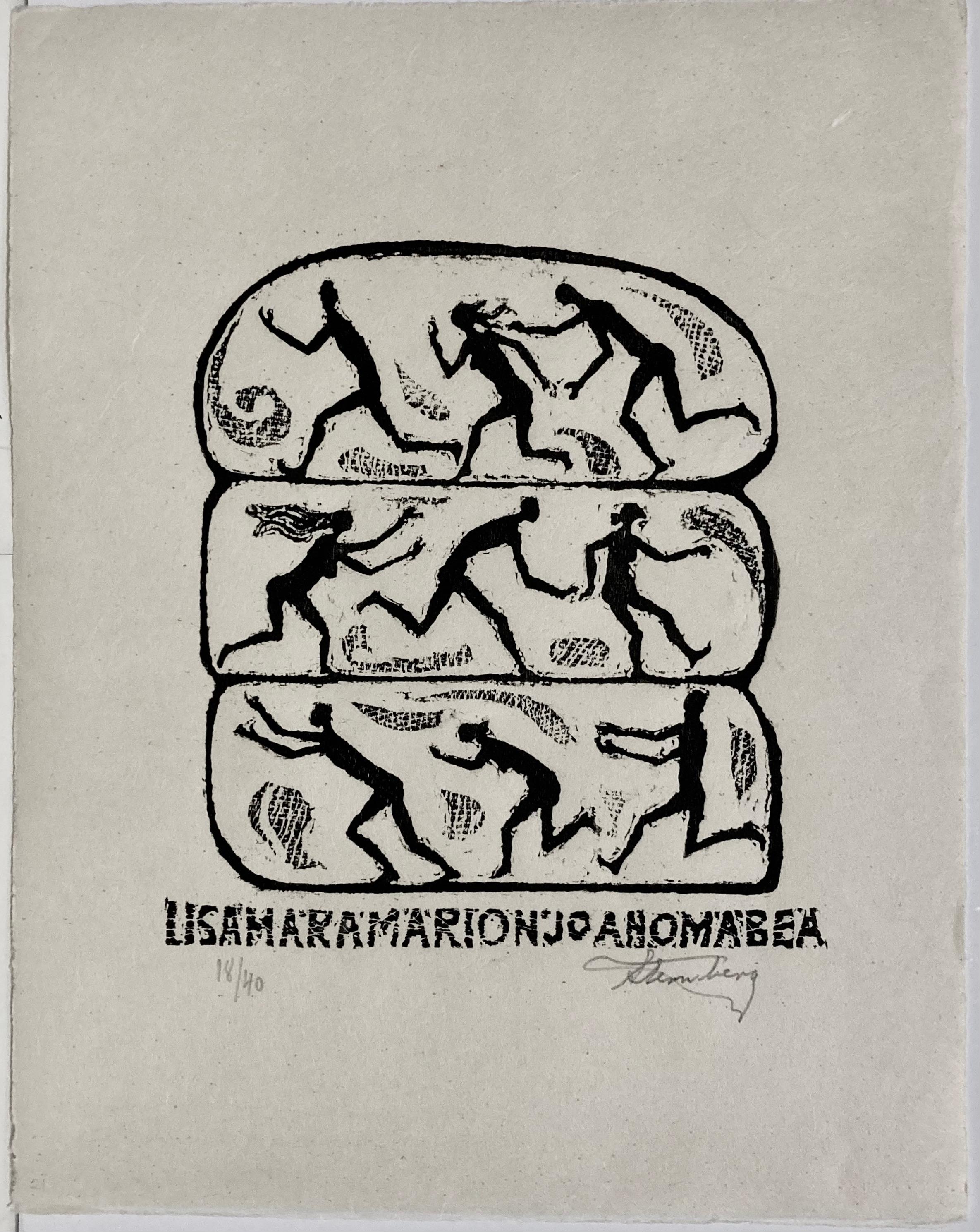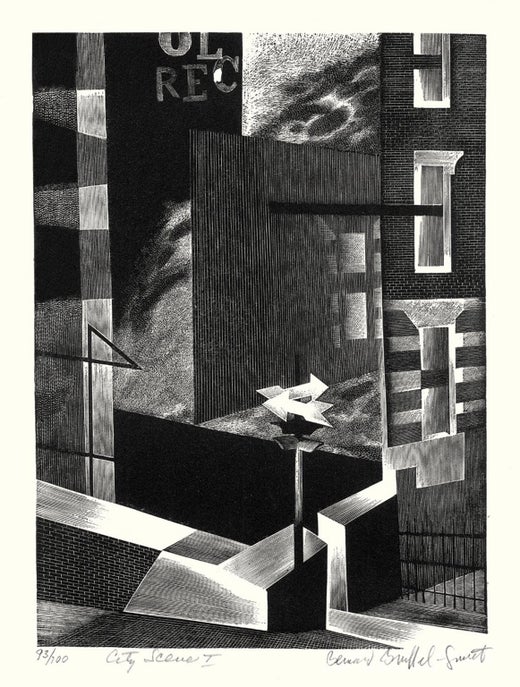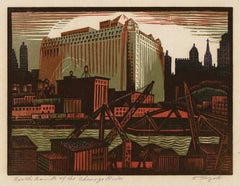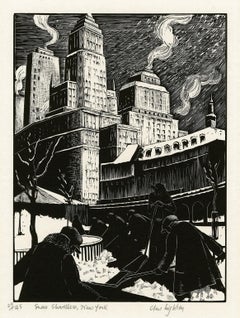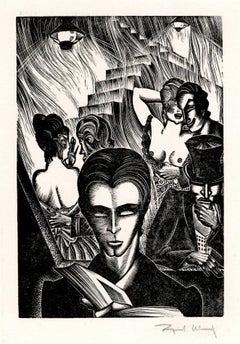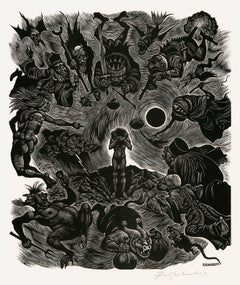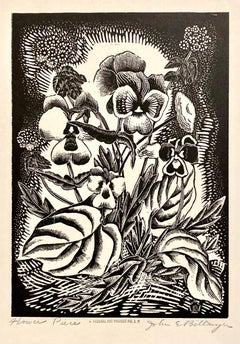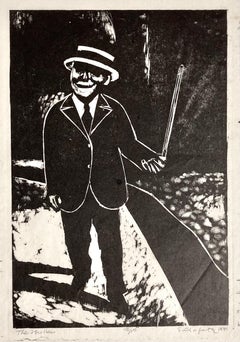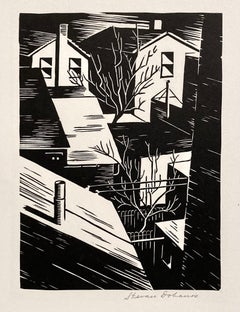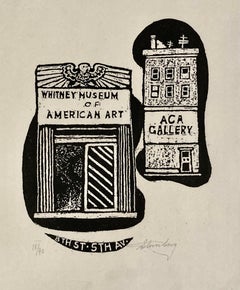Bernard Brussel-SmithCity Scene I — Mid-Century Modernism, Precisionism1949
1949
About the Item
- Creator:Bernard Brussel-Smith (1914 - 1969, American)
- Creation Year:1949
- Dimensions:Height: 6.57 in (16.69 cm)Width: 4.75 in (12.07 cm)
- Medium:
- Movement & Style:
- Period:
- Condition:
- Gallery Location:Myrtle Beach, SC
- Reference Number:Seller: 961881stDibs: LU53236622222
Bernard Brussel-Smith
Bernard Brussel-Smith was a well-known 20th-century artist and illustrator, specializing in the medium of wood engraving.
Brussel-Smith was born, raised and lived most of his life in New York City, which was a constant source of imagery for the artist, from the Depression-era '40s through the postwar '50s until his death. He studied at the Pennsylvania Academy of Fine Arts in Philadelphia and the New School for Social Research in New York. He later taught art at the Brooklyn Museum, Cooper Union, City College and the National Academy. Brussel-Smith was elected an Associate Member of the National Academy in 1952 and became a full member in 1973.
Brussel-Smith's work is included in various public collections, including the Metropolitan Museum of Art, the Philadelphia Museum of Art, New York Public Library and Carnegie Institute.
Find a collection of Bernard Brussel-Smith prints today on 1stDibs.
- ShippingRetrieving quote...Shipping from: Myrtle Beach, SC
- Return Policy
More From This Seller
View All1930s American Modern Figurative Prints
Woodcut
1920s American Modern Figurative Prints
Woodcut
1930s American Modern Figurative Prints
Woodcut
1970s American Modern Figurative Prints
Woodcut
1930s American Modern Figurative Prints
Woodcut
1930s American Modern Figurative Prints
Woodcut
You May Also Like
Mid-20th Century American Modern Figurative Prints
Woodcut
1970s American Modern Figurative Prints
Woodcut
1930s American Modern Landscape Prints
Woodcut
1990s American Modern Figurative Prints
Woodcut
1990s American Modern Figurative Prints
Woodcut
1990s American Modern Figurative Prints
Woodcut
